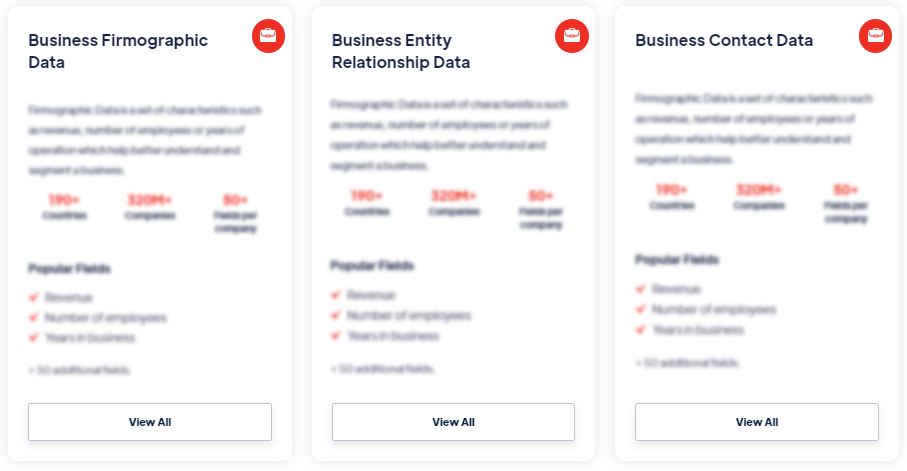Best
User Behavior Tracking Data
Products
User behavior tracking data refers to the collection and analysis of information related to how users interact with digital platforms, websites, or applications. It involves tracking and recording various user actions, such as clicks, page views, time spent on pages, navigation paths, form submissions, and other interactions. Read more
Our Data Integrations


Request Data Sample for
User Behavior Tracking Data

Browse the Data Marketplace

Frequently Asked Questions
1. What is user behavior tracking data?
User behavior tracking data refers to the collection and
analysis of information related to how users interact with
digital platforms, websites, or applications. It involves
tracking and recording various user actions, such as clicks,
page views, time spent on pages, navigation paths, form
submissions, and other interactions.
2. Why is user behavior tracking data important?
User behavior tracking data provides valuable insights into how
users engage with digital products or services. It helps
businesses understand user preferences, identify patterns, and
make data-driven decisions to improve user experiences, optimize
marketing strategies, and drive business growth.
3. What are the methods used for user behavior tracking?
There are several methods used for user behavior tracking,
including the use of tracking codes or scripts embedded in web
pages, cookies or local storage to store user data, log file
analysis, heatmaps, clickstream analysis, event tracking,
session recording, and user surveys or feedback mechanisms.
4. What types of data are tracked in user behavior
tracking?
User behavior tracking can capture various types of data,
including page views, clicks, scroll depth, time spent on pages,
conversion events, session duration, referral sources, device
types, browser information, geographic location, user
demographics, and other custom events or actions defined by the
business.
5. How is user behavior tracking data analyzed?
User behavior tracking data is typically analyzed using
analytics tools or platforms that provide data visualization,
segmentation, and analysis capabilities. These tools allow
businesses to gain insights into user behavior patterns,
identify trends, measure key performance indicators (KPIs), and
make data-driven decisions.
6. What are the benefits of user behavior tracking data?
User behavior tracking data helps businesses understand user
preferences, optimize user experiences, improve conversion
rates, identify usability issues, personalize content and
recommendations, enhance marketing strategies, and identify
areas for improvement in products or services.
7. What are the considerations for user behavior tracking
data?
When collecting and analyzing user behavior tracking data,
businesses need to consider privacy regulations and data
protection measures. It's important to inform users about
the tracking methods used, obtain consent where necessary, and
handle user data securely and responsibly.
